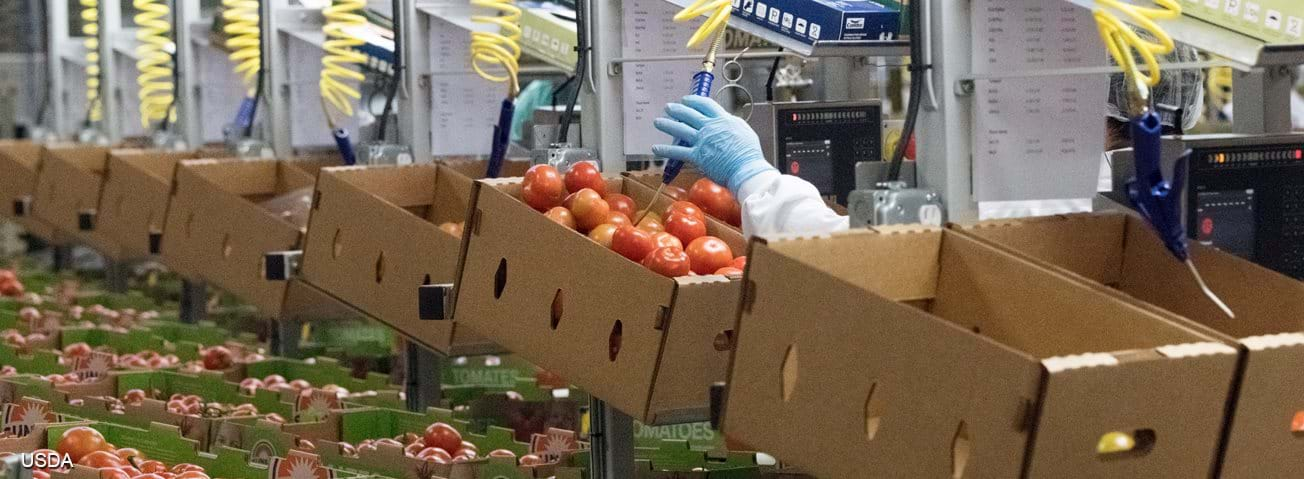USA
April 6, 2020

Several USDA programs support the development and use of automation or mechanization in the production and processing of U.S. specialty crops. Specialty crops are defined as fruits and vegetables, tree nuts, dried fruits and horticulture and nursery crops, including floriculture.
At $64.7 billion, specialty crops comprised one-third of U.S. crop receipts and one-sixth of receipts for all agricultural products in 2017. Many specialty crops are labor intensive in production, harvesting, or processing. For example, harvesting often requires workers to accurately distinguish ripe and unripe fruits and vegetables and gently pick, sort, or package the fruit or vegetable by hand without damage. A long-term decline in the supply of farm labor in the U.S. encourages producers to select less labor-intensive crops, invest in labor-saving technologies, and develop strategies to increase labor productivity.
During 2008-18, programs in USDA’s Agricultural Marketing Service, Agricultural Research Service, and National Institute of Food and Agriculture funded $287.7 million toward 213 projects to develop and enhance the use of automation or mechanization in specialty crop production and processing. Each of the USDA programs is designed differently to achieve unique objectives, although each program addresses the development and use of automation or mechanization in specialty crops in some form.
These projects represent multiple stages of research from the development of component parts, to working prototypes, to field trials, to integrated commercial technologies. Projects covered a broad spectrum of technologies, including job aid/machinery automation, machine learning/data analysis, mechanical harvesting/processing, precision agriculture, remote sensing/drones, and sensors. Ultimately, adoption of these technologies will depend on economic and behavioral factors unique to individual producers. For example, adoption of a new harvester technology that requires orchard redesign, while labor saving, may not be feasible in the short run.
Additionally, USDA has three programs in Rural Development that support the infrastructure needed for adoption of automation or mechanization. These programs are targeted toward rural infrastructure that support or enable the automation or mechanization technologies to function. From 2010 to 2018, Rural Development funded $3.4 billion toward 280 digital infrastructure projects that facilitate the use of automation or mechanization in specialty crop production and processing. The data in this chart are available in the Economic Research Service Report, Developing Automation and Mechanization for Specialty Crops: A Review of U.S. Department of Agriculture Programs.
